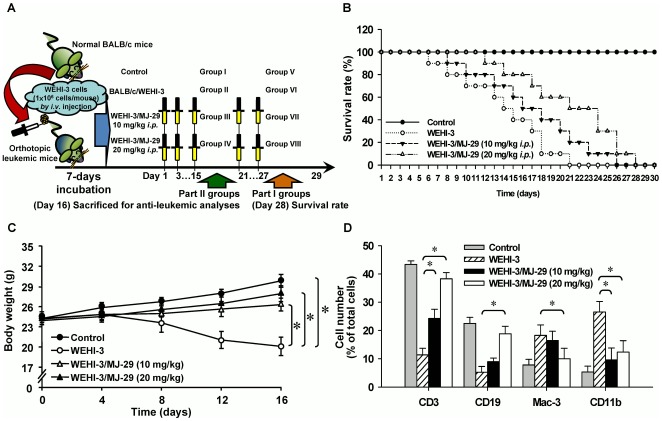Figure 6. Anti-leukemic activity of MJ-29-impaired WEHI-3 leukemic mice in vivo.
(A) The experimental design and protocol of orthotopic leukemic mice model. Efficacy of intraperitoneal (i.p.) treatment with MJ-29 was investigated the survival rate and anti-leukemic responses on leukemic mice [BALB/c mice after intraperitoneal (i.v.) with WEHI-3 cells]. (B) Whole survival rate of leukemic mice was counted after MJ-29 exposure for 28-days administration. The animals were given intraperitoneally and anti-leukemic activity was determined as the survival rate by Kaplan-Meier estimator every day in all groups. There is a significant overall survival difference in comparison to the leukemic mice groups in the presence and absence of MJ-29 exposure versus control mice. (C) Mice were intravenously injected with WEHI-3 cells (1×106 cells/100 µl per mouse) in PBS, and then treated with or without MJ-29 (10 and 20 mg/kg) by intraperitoneal injection for 16 days. During the treatment, each animal was measured the body weight once every four days for 16-days intervals as described in the “Materials and Methods”. (D) Whole blood was collected from individual mice and leukocytes were analyzed the with specific cell surface markers by flow cytometry. The CD markers include CD3 for T lymphocytes, CD19 for B cells, Mac-3 for macrophages and CD11b for monocytes. The results are expressed as means ± S.D. and samples were obtained from at least five mice per group, and * p<0.05 is found significantly different by Tukey's HSD test when compared with the leukemic (only injection with WEHI-3 cells) and experimental (WEHI-3 cells injected before intraperitoneal treatment with MJ-29 at 10 and 20 mg/kg) mice groups.

